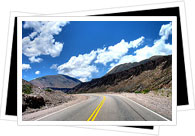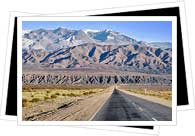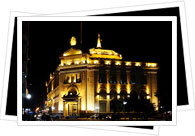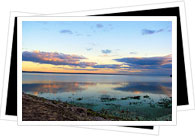
Jujuy - San Salvador de Jujuy is a really exciting city and the capital of Argentina's northwestern province of Jujuy. It was founded in 1592 by the Spanish and despite being devastated in 1812 during the Wars of Independence, it still contains a good sized handful of well preserved colonial architecture. However, Jujuy has also seen a lot of urbanisation in recent years but the old somehow complements the new making it an attractive spot to spend a few days. This city has the largest concentration of Quechua inhabitants in all of Argentina, meaning that the culture is a lot more rooted in Andean indigenous customs and traditions and you will find this reflected especially strongly in the food and music of the region. Getting to Jujuy is easy as there is an international airport nearby (see the Transportation in Argentina page for more information.) The best time to visit is undoubtedly in Spring as the summer is scorching and the temperatures on winter nights can plummet to below freezing.
The city of Jujuy is a perfect place from which to begin your exploration of the surrounding areas and a trip to the Quebrada de Humahuaca is a must. This beautiful gorge is unforgettable with its immense rock formations tinted with rosy hues. The gorge was named a UNESCO World Heritage site in 2003. Tilcara is found just 80km from Jujuy and is one of the largest pre-colombian fortresses in the country. 2500 metres above sea level and surrounded by domineering mountain sides, the site also offers some wonderful views and the nearby town of the same name is a homely and traditional place which springs to life at festival time.

Salta - The 'capital of the North' is an unmissable stop on you northwestern argentina tour. The city is a wonderful example of colonial Argentina, a rare treat as in many big cities a lot of the original architecture has been lost to earthquakes and urbanisation. This quaint city is alive day and night and an exciting place to spend a few days nestled amidst the Lerma valley with the impressive mountains of San Bernardo and 20 de Febrero forming a dramatic backdrop. For more information check out our Salta Argentina City Guide.
Tren a las Nubes - (***Currently closed for restoration***) Don't miss the chance to catch the train to the clouds! Reaching 4200 metres, this is one of the highest train lines in the world, offering incredible views, especially those across the Quebrada del Toro gorge. The train runs from Salta along 217 km of track to La Polvorilla and can carry up to 640 passengers. The complex system of viaducts was designed by Richard Maury and was opened to the public in 1972. You can catch the train every Saturday from Salta or at any of the 21 stops on the way to La Polvorilla.

San Miguel de Tucumán - This lively city is the capital of the Tucumán province and a really vibrant place to explore, as well as being an ideal stop off point for excursions into the surrounding valleys. The city itself is a meeting point for the diverse landscapes of the region and is flanked by far reaching plains to the east side and dramatic mountains to the west. It is also home to a very pretty cathedral, resemblant of a cream cake with its pink and white ornamentation and there are several museums worth visiting, including the Museum of Argentina's Independence. When the sun goes down, Tucumán springs into action with a big selection of bars and restaurants to choose from.
Valles Calchaquíes - These stunning valleys can be accessed from Salta and Tucumán and promise to give an unforgettable experience. Covering 530km of semi desert, the Calchaquíes valleys have an incredibly diverse landscapes from sparse arid land dotted with cacti to glistening gorges, plunging valleys and hidden oases. The main industry here is wine production in the high altitude vineyards where Torrontés wine is produced. Whilst the dry and warm temepratures are unusual for succesful wine making, it is very agreeable for hiking as these highland valleys do not get too hot in the summer and stay warm in winter. It's a 20km trek up Cuesta del Obispo from which you can appreciate some truly beautiful vistas and get to the prettiest town in the valleys, Cachí. However, other traditional little villages and towns worth a peek are Molinos, Angastaco and San Carlos.

Santiago del Estero - This exceptionally pretty city is home to 420,600 Argentines and is the oldest city in the country. Santiago de Estero was founded in 1553, however, not many of the original buildings remain and it is now mainly modern, but has been carefully designed. The Francisco de Aguirre Park and the Plaza de la Libertad are pretty places to take a walk and at night the Plaza and the dramatic cathedral which backs it resemble something out of a fairy story with magical floodlighting. The city runs along the banks of the Río Dulce which offers tons of opportunities for watersports and sport fishing.